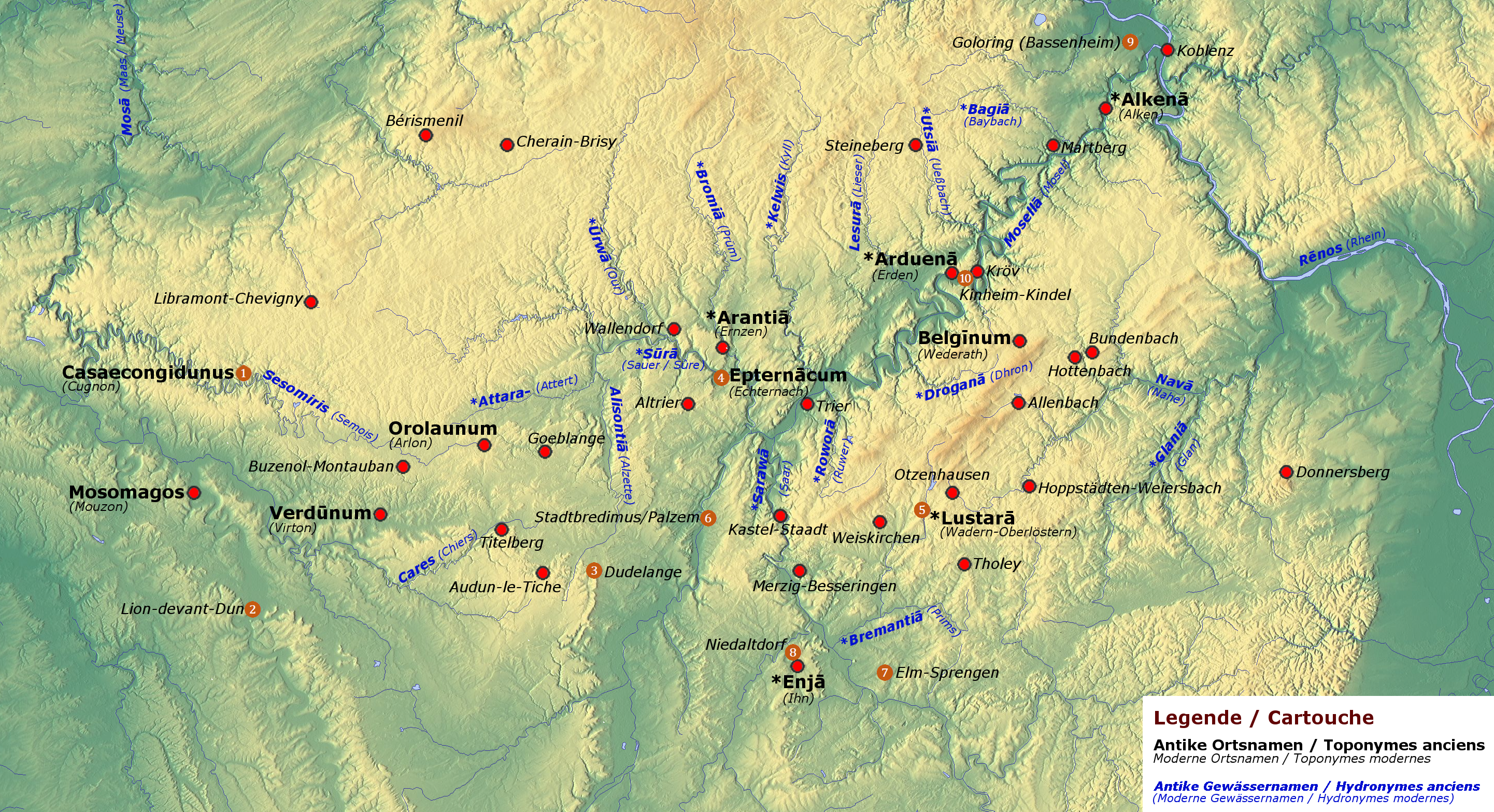As you move the mouse over the dots and names on the map, more information about the objects will be given in pop-up windows.
Eine deutsche Version dieser Karte ist in Vorbereitung. Une version française de cette carte est en préparation.
Click to go back to the index page


